Analyze content with AI
Introduction
Beside GenAI being used during the design time of developing Flowable apps, there are also some AI-assisted features available at runtime.
As we saw with the AI Service, described in the AI Service Definition or in more detail in this AI Service Howto, there is a very powerful way to design and create your very own AI-services you can then use at runtime within process or case models or even directly embedded into your form.
In this part of the documentaton, we want to have a look at the AI-assisted content features available within the Flowable runtime.
AI-assisted analysis of content
The attachment component of the Flowable form engine allows to use built-in AI content analysis where the content of any document can be used as context to ask questions about it, generate abstracts or even translate it into various other languages.
Letting AI generate an abstract for you was never as easy as with those features.
Looking at the Flowable assistant, we can see some of those AI-assisted features:
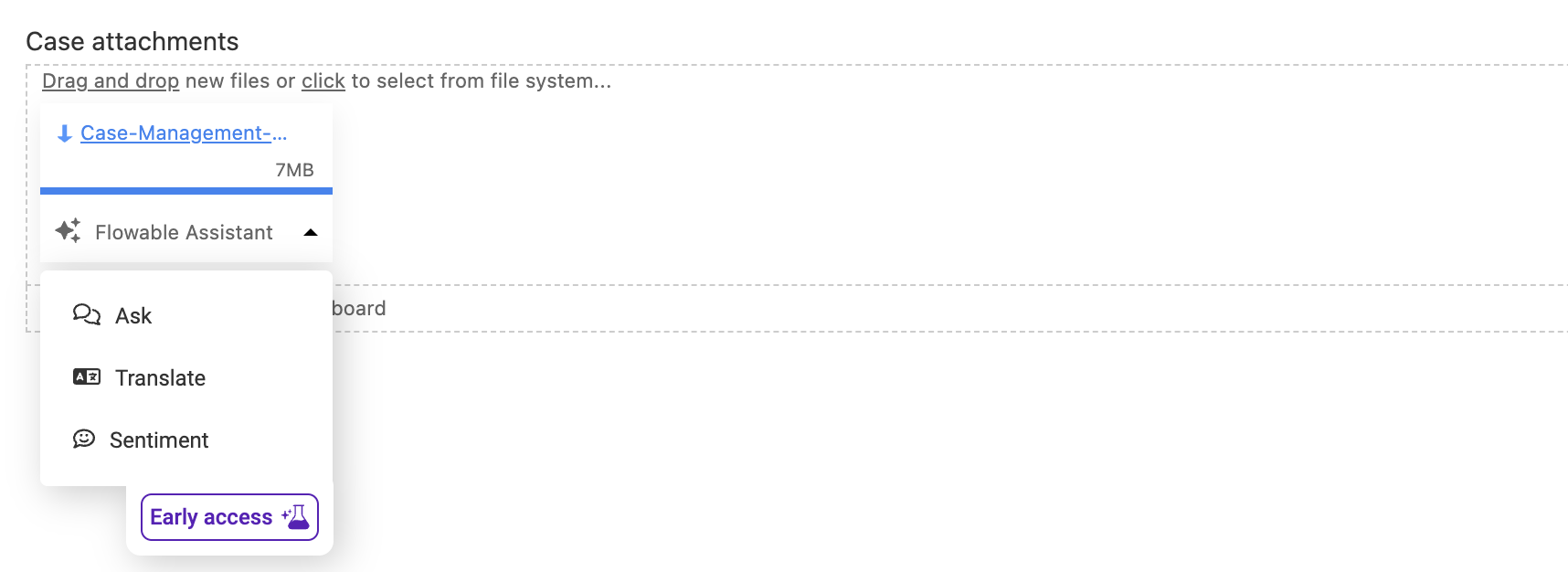
Ask AI about content
The first feature is a very powerful one, where you can ask any questions or execute prompts against the content.
For this documentation, we use the content of this Blog post around CMMN, so you can play with it as well if you want.
When selecting the Ask button, you can see some predefined prompts you can directly use like Summarize:
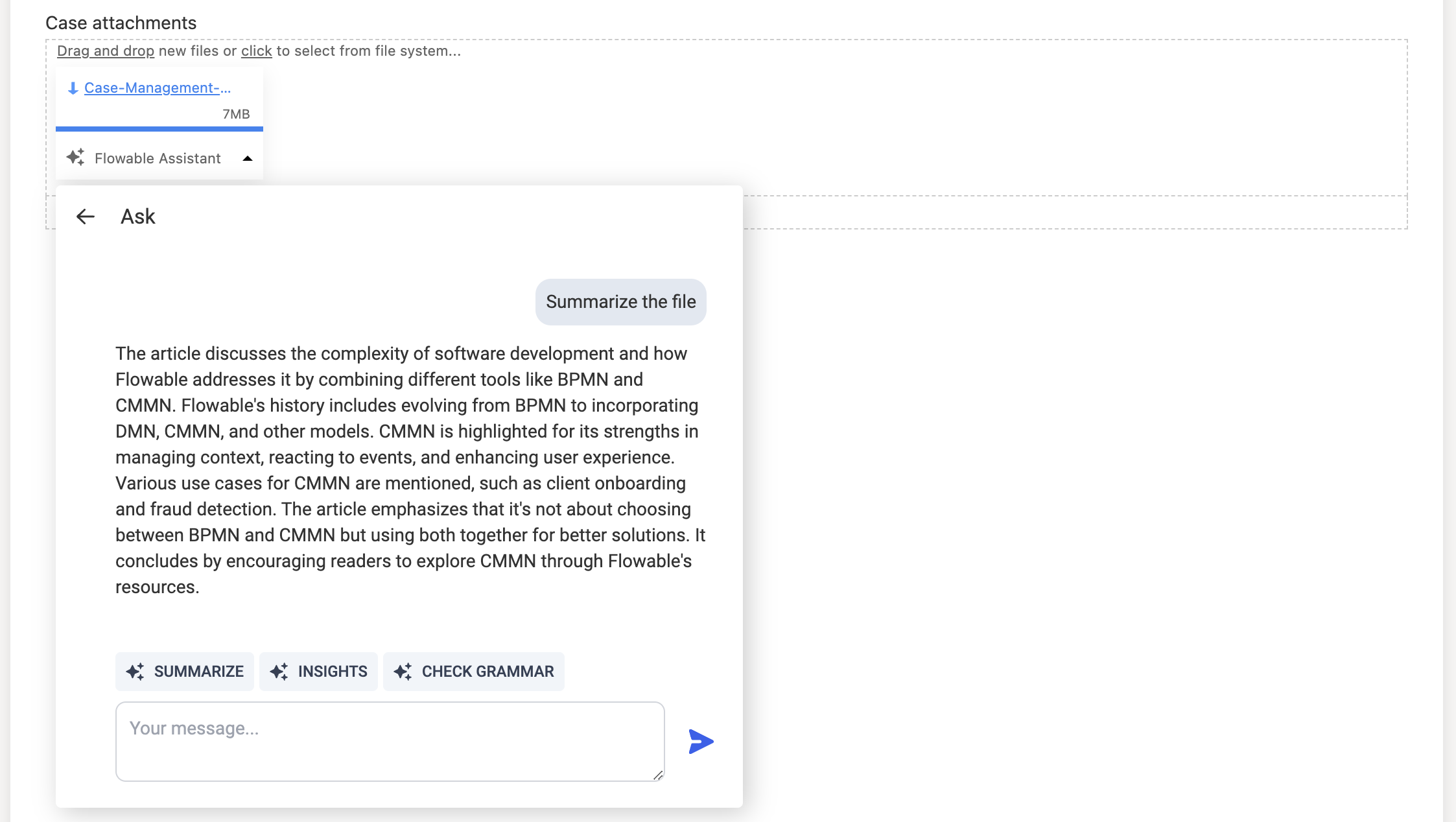
You can also get meaningful insights into the content or also let it check for grammar mistakes you might want to correct.
But of course you can start a conversation with AI directly as well and start asking questions or prompting AI to do something for you.
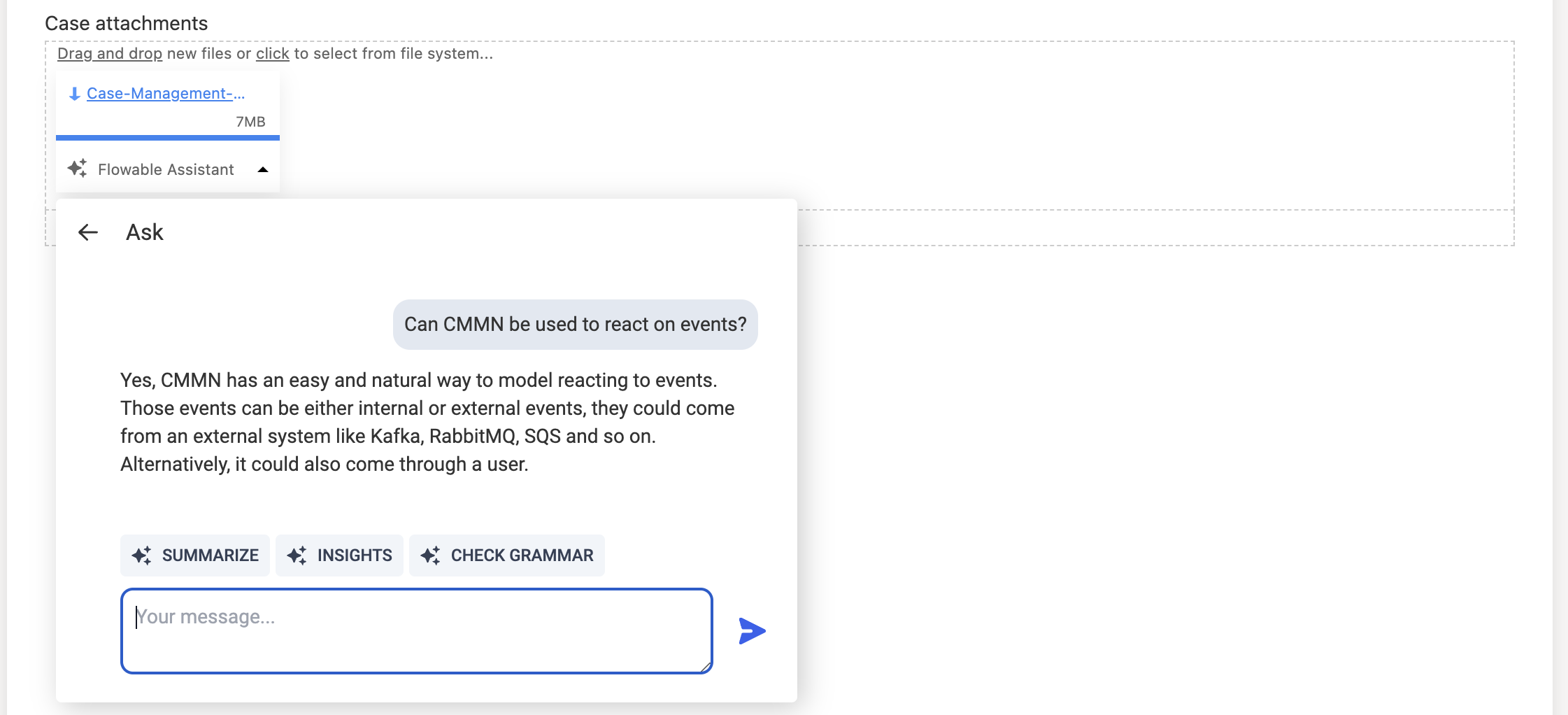
Translate content into another language
You can also use the Translate functionality to get your content translated into another language using AI and then download or re-attach the generated
document in your selected language:
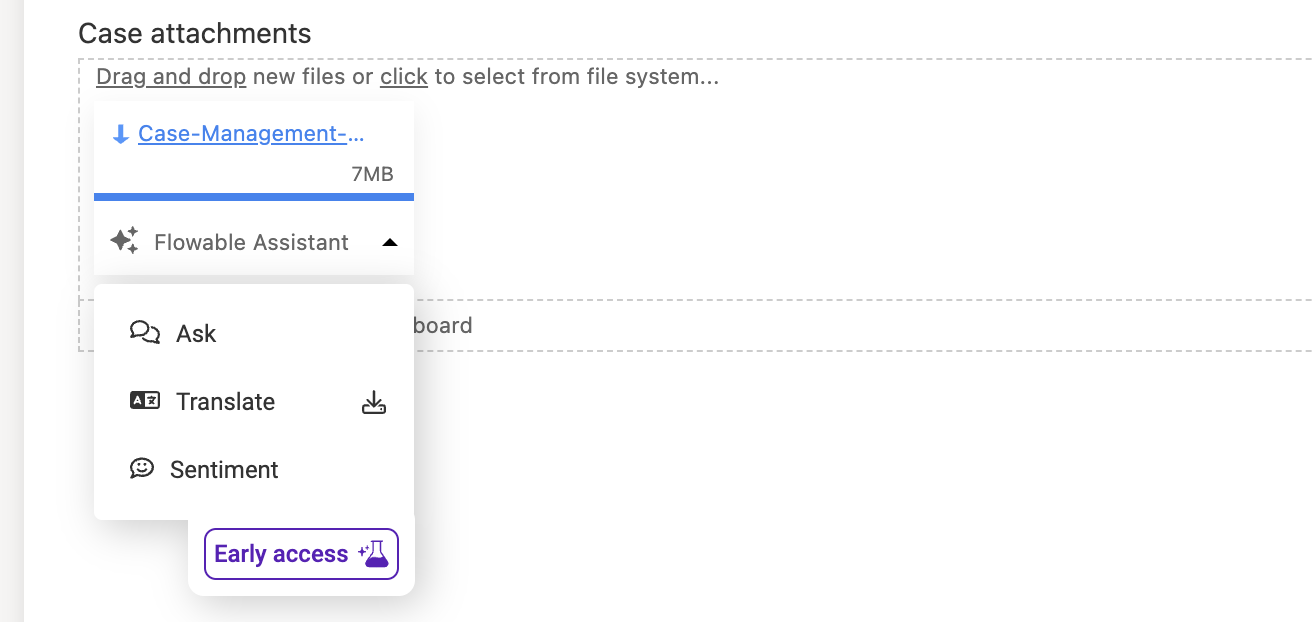
Sentiment analysis
Another built-in feature is to let AI analyze the sentiment of the content which might come in handy especially on customer inbound content like emails you
want to examine the sentiment to maybe react on it differently or with different staff or another priority depending on the sentiment rating.
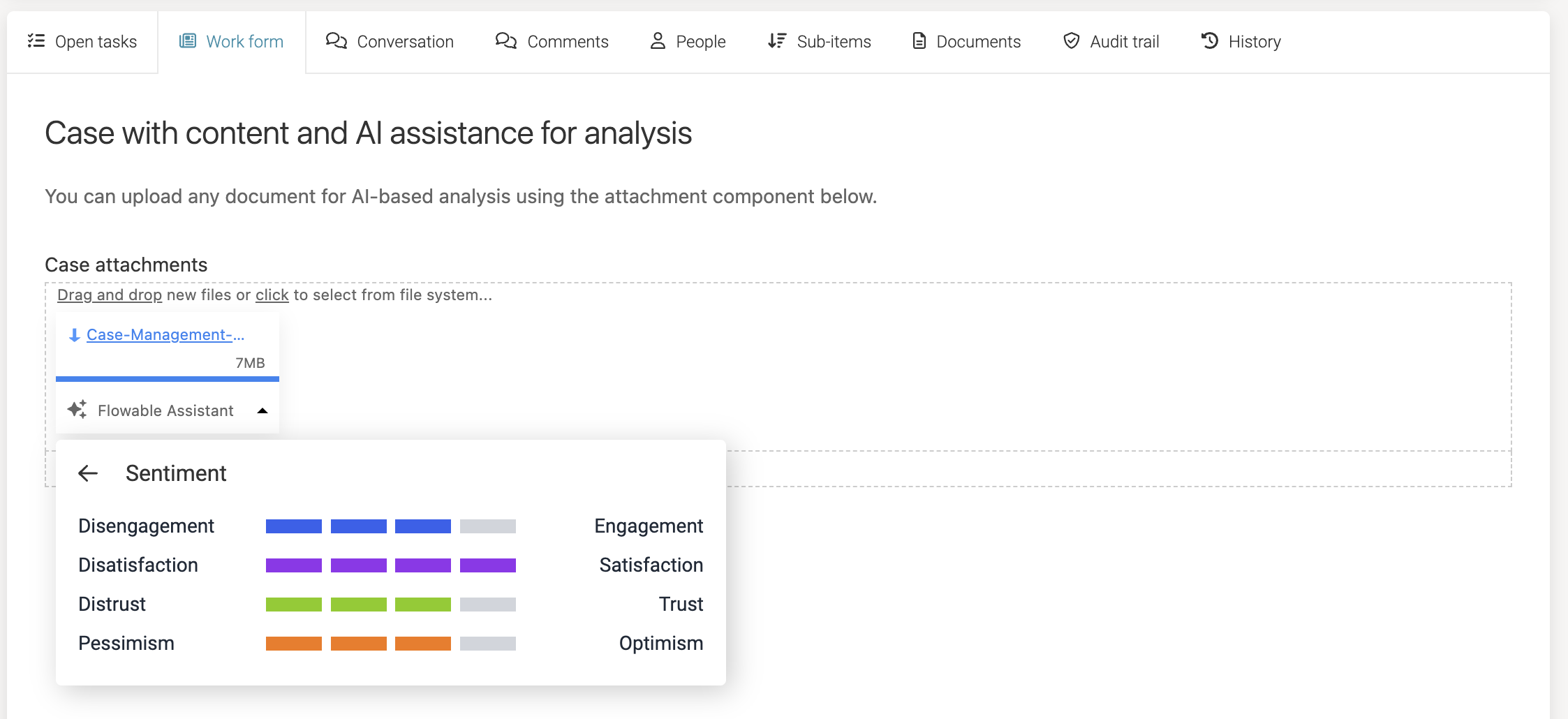
As we saw with the AI Service Definition, it would be very easy to even create a sentiment analysis service definition you can use within your process to automatically let AI report back on the sentiment and according the score react on it, without any human interaction at all necessary.
Conclusion
With the AI-assisted analysis features, you can gain some time by letting AI create summaries, analyze content for you or even answering very specific questions based on content within your process or case.
If some of them seem like very useful and should be even automated, you can create an AI service for it and include it into your automatic processing.